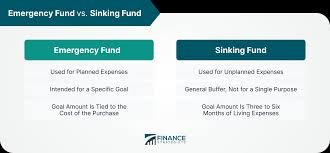
An emergency fund is your financial safety net. It helps you handle unexpected life events—like medical bills, car repairs, or job loss—without going into debt. In this emergency fund guide, you’ll learn what it is, why it’s important, and how to build one step by step.
Why You Need an Emergency Fund
Life can be pretty unpredictable, can’t it? Without some savings tucked away, just one unexpected event can really derail your whole budget. That’s where an emergency fund comes in:
- It brings you peace of mind
- It shields you from falling into debt
- It helps keep your financial goals in sight
Having an emergency fund isn’t just a nice-to-have; it’s absolutely essential.
Emergency Fund Guide: Step-by-Step
- Set a Realistic Goal
If you need to, start small. Aim for a starter fund of around $500 to $1,000, then gradually work your way up to covering 3 to 6 months’ worth of essential expenses.
- Open a Separate Savings Account
Make sure to keep your emergency fund separate from your everyday spending account. A high-yield savings account is perfect for this, as it allows easy access while also earning a bit of interest.
- Make It a Monthly Habit
Think of saving as a regular bill. Set up an automatic transfer of a small amount—whether it’s $20, $50, or more—into your emergency fund every payday.
- Cut Expenses to Boost Savings
Take a break from non-essential spending, like dining out or online shopping. Use that extra cash to boost your fund.
- Use Only for Real Emergencies
Remember, this fund is not for vacations or shopping sprees. It’s meant for genuine emergencies, like medical issues, home repairs, or job loss.